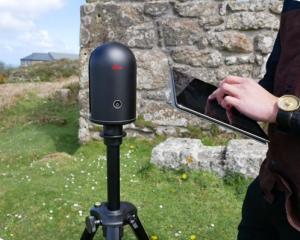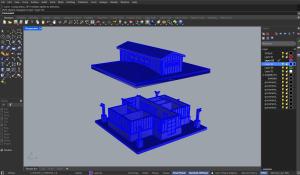The Future is Now: Emerging Technologies Revolutionizing Architecture and Engineering
In an era defined by rapid technological advancement, the architecture and engineering fields are undergoing transformative changes. Emerging technologies are not just enhancing efficiency and precision; they are reshaping the very way we conceive, design, and construct the built environment. Whether you are a seasoned professional or an aspiring architect or engineer, understanding these innovations is key to staying ahead of the curve. Here is a look at a couple of exciting technologies driving the future of architecture and engineering.
LIDAR Scanning
LIDAR (Light Detection and Ranging) scanning is a remote sensing technology that uses laser pulses to measure distances to a target. This technology generates precise, digital, three-dimensional data points representing real-world information about building elements, objects, and landscapes’ shape and surface characteristics. Architects and engineers can use LIDAR scans to capture detailed site data quickly, reducing the time and cost associated with traditional surveying methods.
LIDAR Scanning provides many benefits:
- Accuracy: LIDAR scanning provides accuracy tighter than traditional fieldwork methods.
- Efficiency: A large area can be scanned in less time than traditional measurement methods.
- Cost Effectiveness: Potential for reduced errors during design and construction as well as a reduced number of site visits for the design team.
A LIDAR system emits thousands of laser pulses per second toward a target, such as the floor, walls, and ceiling of a building. These laser pulses hit a surface and reflect to the LIDAR sensor. The system measures the time it takes for the laser pulses to return to the sensor. Each time a pulse returns to the sensor, an “x,y,z” data point is established. The LIDAR system collects millions of data points per second, each representing a real-world coordinate. The collection of these points creates a highly accurate 3D point cloud of the scanned area. The point cloud is then utilized by the design team and client to effectively carry out a project.
B&L is utilizing this cutting-edge, field measurement and visualization technology; carrying out the design and construction process with more confidence knowing all existing conditions for a project have been gathered accurately.

3D Printing
3D printing is a process that creates three-dimensional objects by adding material layer by layer, based on a digital model. There are ranges of benefits that come from 3D printing.
- Designers can physically see the proportions of a building, and work with clients to determine if the placement of specific elements are correct.
- The models can be showcased at community planning meetings, board meetings, and other events so the public and/or clients can visualize what a completed project will look like.
The process starts with a digital design, typically created using computer-aided design (CAD) software. This digital model is then sliced into thin horizontal layers by the 3D printer’s software. The 3D printer reads these slices and begins printing the object, one layer at a time, by depositing material—usually plastic, resin, metal, or other substances—until the entire object is formed.
B&L uses 3D printing to create mass modeling, schematic designs, and final design models. These models allow the architects and clients to physically see the proportions of a building and how pieces align. This way adjustments can be made before the project begins, ensuring they are completed on time and within budget.

The integration of LIDAR scanning and 3D printing at B&L marks a significant step forward in the firm’s ability to deliver high-quality, well-coordinated projects. These technologies not only enhance the accuracy and efficiency of the design and construction process but also create better communication with clients and stakeholders that leads to successful project outcomes. For more information on LIDAR Scanning and 3D Printing, reach out to Tim Bivens, AIA, NICARD, our Architectural Practice Area Leader.
Watch our 3D printer in action!


